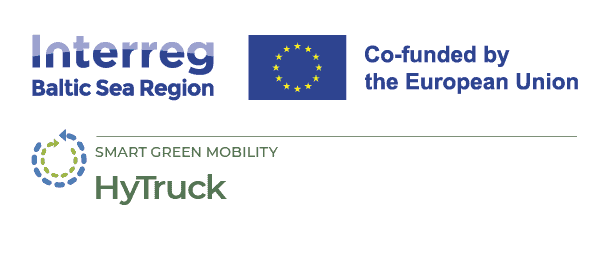
Lithuania eager to lead green hydrogen production in the Baltics until 2050
25 June 2024
The HyTruck Breakfast Briefing #10 on June 5, 2024, featured Lukas Satkauskas, Chief Specialist of the Ministry of Energy of Lithuania, discussing the country’s hydrogen development plans from 2024 to 2050. Lithuania’s roadmap for hydrogen development is approved, with an implementation plan underway. Hydrogen production is closely linked to renewable energy projects, with a focus on green hydrogen to help decarbonize the economy and avoid low or negative energy prices. The country aims to leverage its renewable energy potential, particularly in wind and solar, to produce and export surplus energy. By 2050, Lithuania plans to develop significant capacities in offshore wind (4.5 GW), onshore wind (10 GW), and solar (9 GW).
Lithuania’s long-term vision is to lead the Baltic region in green hydrogen, achieving energy independence and becoming an energy exporter. The country aims to phase out fossil fuels and develop a supportive legal and regulatory framework. Plans include 1.3 GW of electrolysis capacity by 2030 and 8.5 GW by 2050, with green hydrogen production reaching 732 kt, covering 32% of Lithuania’s total final energy demand by 2050. The main offtakers for hydrogen are expected to be fertilizer and refinery producers, the transport sector, and export markets. Investments in renewable energy and hydrogen production are essential, with billions of euros needed by 2030.
Džiugas Šaulys, Head of Marketing and Communication at The Port of Klaipėda Authority, discussed hydrogen production and refueling station development in Klaipeda. Klaipeda port is well-developed, with infrastructure supporting traditional activities like stevedoring, shipbuilding, and energy cargo handling. Future activities will include offshore wind hubs and green fuels production, with methanol-powered vessels starting operation. The port has received a PERS certificate for green port status, making it one of only two ports in the Baltic Sea with this certification.
The port’s hydrogen production will feature a 2 MW electrolyzer with a capacity of 530 kg/day, starting production in 2026. Partial EU funding was received, and the project aims to produce 127.428 kg/year by 2030. The hydrogen will serve the port’s vessels, public transport, and other clients, with plans to expand green fuel production and export.
Andrius Agintas, Head of Infrastructure Team, presented plans for a green hydrogen production facility in Vilnius, with a CapEx of approximately €8 million. The project, co-financed by EU funds and Vilnius city administration, aims to install a 3 MW production capacity by 2026. The facility will supply green hydrogen for private cars, commercial transport, and city buses. Additionally, the waste heat from hydrogen production will be utilized in the city’s centralized heating system. A filling station will be established in Vilnius, accessible to city buses and the public, with a capacity of 800 to 1000 kg/day and a filling time of less than 15 minutes for passenger vehicles.
Lithuania’s commitment to hydrogen development is evident in its comprehensive plans and investments, aiming to lead in green hydrogen production and usage while setting an example for others.





